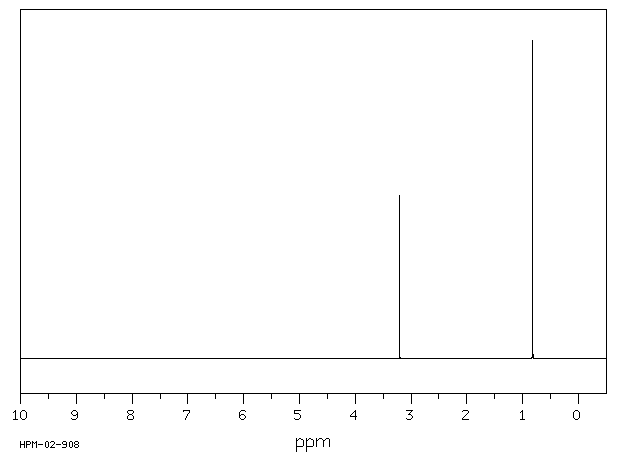chloro(chloromethyl)dimethylgermane | 6727-64-6
中文名称
——
中文别名
——
英文名称
chloro(chloromethyl)dimethylgermane
英文别名
Chlor-chlormethyl-dimethyl-german;Chlor-dimethyl-chlormethyl-german;Chlormethyl-dimethyl-chlorgerman;Chlormethyldimethylchlorgerman;chloro-(chloromethyl)-dimethylgermane
CAS
6727-64-6
化学式
C3H8Cl2Ge
mdl
——
分子量
187.593
InChiKey
HDSQBPFIWQYXPF-UHFFFAOYSA-N
BEILSTEIN
——
EINECS
——
-
物化性质
-
计算性质
-
ADMET
-
安全信息
-
SDS
-
制备方法与用途
-
上下游信息
-
文献信息
-
表征谱图
-
同类化合物
-
相关功能分类
-
相关结构分类
计算性质
-
辛醇/水分配系数(LogP):2.21
-
重原子数:6
-
可旋转键数:1
-
环数:0.0
-
sp3杂化的碳原子比例:1.0
-
拓扑面积:0
-
氢给体数:0
-
氢受体数:0
安全信息
-
海关编码:2931900090
SDS
反应信息
-
作为反应物:描述:chloro(chloromethyl)dimethylgermane 在 碳酸氢钠 作用下, 以 乙醚 、 水 为溶剂, 以93%的产率得到1,3-bis(chloromethyl)-1,1,3,3-tetramethyldigermoxane参考文献:名称:含有锗和氮作为杂原子的杂环化合物的合成。一世摘要:从氯(氯甲基)二甲基锗烷合成了几个在同一环中同时含有锗和氮作为杂原子的五元和六元杂环化合物。描述了它们的反应以及相关的氨基甲基锗烷的反应。DOI:10.1016/s0022-328x(00)99387-2
-
作为产物:描述:参考文献:名称:TACKE, REINHOLD;BECKER, BEATE, J. ORGANOMET. CHEM., 354,(1988) N 2, C. 147-153摘要:DOI:
文献信息
-
Infrared study of intramolecular coordination in organogermanium compounds作者:A.N. Egorochkin、E.I. Sevastyanova、S.Ya. Khorshev、S.Kh. Ratushnaya、S. Richelme、J. Satge、P. RiviereDOI:10.1016/s0022-328x(00)83698-0日期:1980.4Frequencies (ν) and integrated intensities A of GeH stretching modes in the IR-spectra of germanes, containing GeCH2Cl and GeCHCl2, have been measured. The doublet character of the ν(GeH) absorption bands has been explained by intramolecular coordination (α-effect) between the chlorine and germanium atoms. The influence of solvents (heptane, carbon tetrachloride, tetrahydrofuran, acetone) on the
-
Synthesis of heterocyclic compounds containing germanium and nitrogen as hetero-atoms. II作者:Kazuhiro Shitara、Yoshiro SatoDOI:10.1016/0022-328x(88)87001-3日期:1988.5reaction of chloro(chloromethyl)dimethylgermane (1) with N-(trimethylsilyl)acetamides (2) gave N-[(chlorodimethylgermyl)methyl]acetamides (3). The amides 3 were converted to heterocyclic compounds containing both germanium and nitrogen as heteroatoms.
-
The Chloromethylgermyl Complexes (η<sup>5</sup>-C<sub>5</sub>H<sub>5</sub>)M(CO)<sub><i>n</i></sub>GeR<sub>2</sub>CH<sub>2</sub>Cl [M = Fe (<i>n</i> = 2), Mo, W (<i>n</i> = 3)]: Rearrangements, Transformations to 1-Germa-3-metallacyclobutanes (η<sup>5</sup>-C<sub>5</sub>H<sub>4</sub>)M(CO)<sub><i>n</i></sub>CH<sub>2</sub>GeR<sub>2</sub>, and their Ring-Opening Polymerizations作者:Paula Apodaca、Mukesh Kumar、Francisco Cervantes-Lee、Hemant K. Sharma、Keith H. PannellDOI:10.1021/om800059r日期:2008.7.1metal−carbonylate salts [(η5-C5H5)M(CO)n]−Na+ (M = Fe (n = 2), Mo, W (n = 3)) and ClCH2GeR2Cl result in the high-yield formation of (η5-C5H5)M(CO)nGeR2CH2Cl (M = Fe, R = Me (1), n-Bu (2); M = Mo, R = Me (3), R = n-Bu (4); M = W, R = Me (5), R = n-Bu (6)). Complexes 1, 2, 5, and 6 are transformed into the isomers (η5-C5H5)M(CO)nCH2GeR2Cl (1a, 2a, 5a, and 6a) thermally and/or photochemically. Treatment of either type过渡金属-羰基化的盐之间的反应[(η 5 -C 5 H ^ 5)M(CO)Ñ ] -的Na +(M = Fe(上Ñ = 2),钼,钨(Ñ = 3))和CLCH 2 GER 2氯结果在高产量形成的(η 5 -C 5 H ^ 5)M(CO)ñ GER 2 CH 2 Cl(上M =铁,R =我(1),ñ -Bu(2); M = Mo,R = Me(3),R = n -Bu(4); M = W,R = Me(5),R =n- Bu(6))。配合物1,2,5,和6被转化成异构体(η 5 -C 5 H ^ 5)M(CO)ñ CH 2 GER 2氯(1A,2A,图5a和图6a)热和/或光化学。任一类型的复合物的治疗和Mo的复合物3和4与所述metallacycles的形成二异丙氨基锂的结果(η 5 - C ^ 5ħ 4)M(CO)ñ CH 2 GER 2(7 - 12)。Mo和W(9和11)的金属环是晶
-
Synthesis, crystal and molecular structures, and steroechemical nonrigidity ofN-(chlorodimethylgermylmethyl)-andN-(bromodimethylgermylmethyl)-N-[(S)-1-phenylethyl]acetamides andN-(chlorodimethylgermylmethyl)-4-phenyl-2-pyrrolidone作者:S. Yu. Bylikin、S. A. Pogozhikh、V. N. Khrustalev、Vad V. Negrebetsky、A. G. Shipov、Yu. E. Ovchinnikov、Yu. I. BaukovDOI:10.1007/bf02499080日期:1990.1RacemicN-(chlorodimethylgermylmethyl)-4-phenyl-2-pyrrolidone and the first optically active amide derivatives containing the asymmetrical carbon atom and the five-coordinate germanium atom,viz.,N-(chlorodimethylgermylmethyl)- andN-(bromodimethylgermyl-methyl)-N-[(S)-1-phenylethyl] acetamides, were synthesized. Their structures were established by X-ray diffraction analysis. The geometric characteristics
-
Reactivity of N-(chlorodimethylgermyl)methyl and N-(chlorodimethylsilyl)methyl derivatives of lactams and amides toward Grignard reagents作者:S. Yu. Bylikin、A. G. Shipov、E. P. Kramarova、O. B. Artamkina、Vad. V. Negrebetskii、Yu. I. BaukovDOI:10.1007/s11176-005-0010-y日期:2004.9N-[(Chlorodimethylgermyl)methyl]lactams and -amides containing a five-coordinate germanium atom react with Grignard reagents chemoselectively by the Ge-Cl bond to form four-coordinate germanium compounds. The method of competitive reactions was used to establish that respective five-coordinate germanium and silicon compounds are almost equally reactive toward Grignard reagents but much more reactive than model four-coordinate germanium and silicon compounds.
表征谱图
-
氢谱1HNMR
-
质谱MS
-
碳谱13CNMR
-
红外IR
-
拉曼Raman
-
峰位数据
-
峰位匹配
-
表征信息
同类化合物
镓,碘二甲基-
锌,溴-1-己炔基-
碘(碘甲基)汞
甲基碘化汞(II)
甲基溴化汞
甲基氯铝N,N-二甲基酰胺
环戊基氯化汞
环庚基氯化汞
溴甲基三溴锗烷
溴化环己基甲基汞
溴二甲基铊(III)
溴-乙基汞
溴(环辛基)汞
溴(己-5-烯基)汞
溴(叔丁基)汞
溴(三丁基)锗烷
溴(2-羟基乙基)汞(II)
溴(2,2-二甲基丙基)锌
汞,溴丙基-
氯环己基-汞
氯化二乙基铟
氯化二丁基铊
氯化乙基汞
氯-甲基-汞
氯-丙基汞
氯-丙-2-基汞
氯-(2,2-二甲基丙基)汞
氯(甲基)铝酰胺
氯(氯甲基)汞
氯(己基)汞
氯(三异丙基)锗烷
氯(三丙基)锗烷
氯(3-甲基丁基)汞
氯(2-羟乙基)汞
氟-三甲基-锗烷
氟(二甲基)锗烷
正丁基氯化汞
正丁基三氯锗烷
异丁基氯化锰
己基汞溴化物
叔丁基氯化锰
叔丁基二甲基氯锗烷
叔丁基-三氯-锗烷
叔丁基(碘)汞
叔丁基(氯)汞
双(碘甲基)汞
双(溴甲基)汞
二碘(二甲基)锗烷
二甲基镓氯化物
二甲基二氯铅







